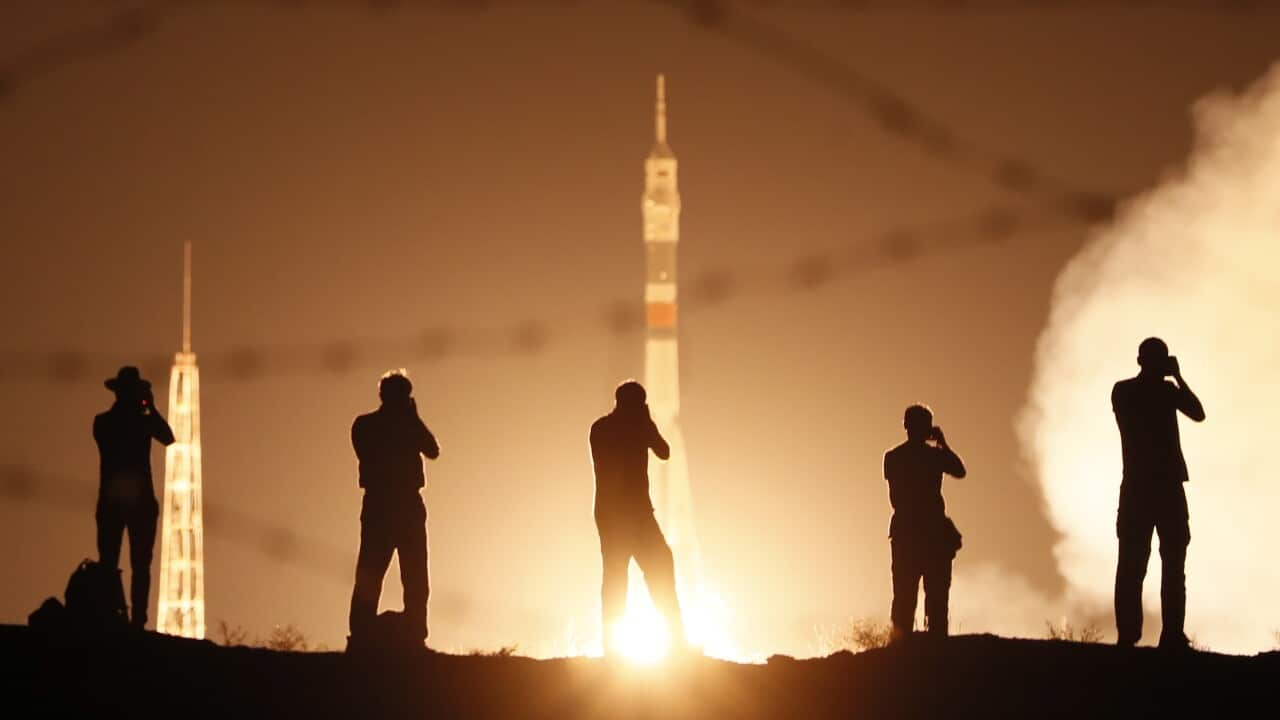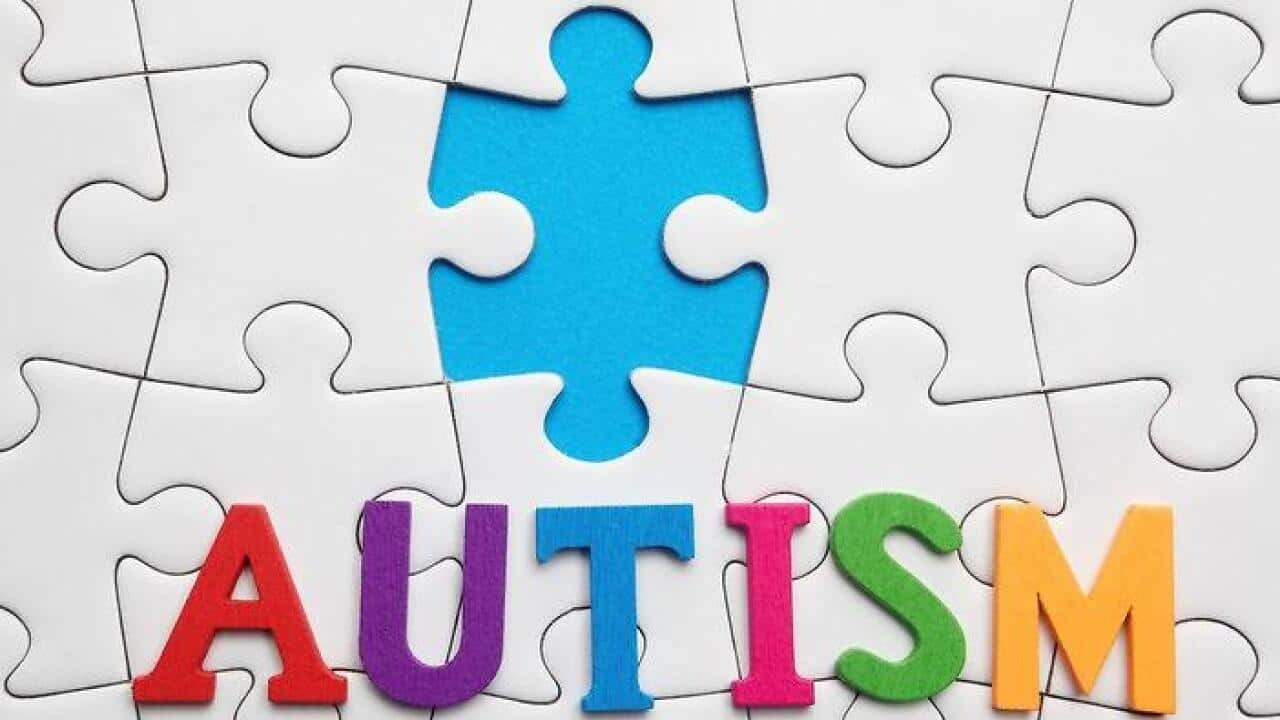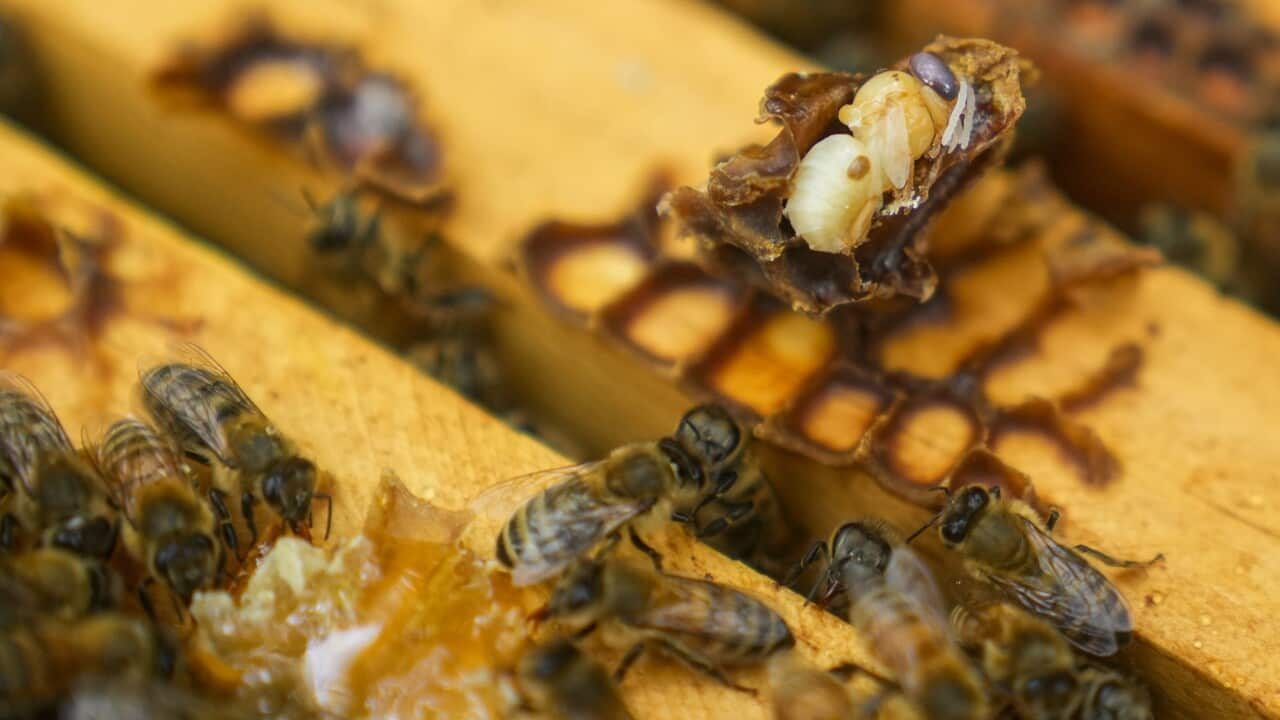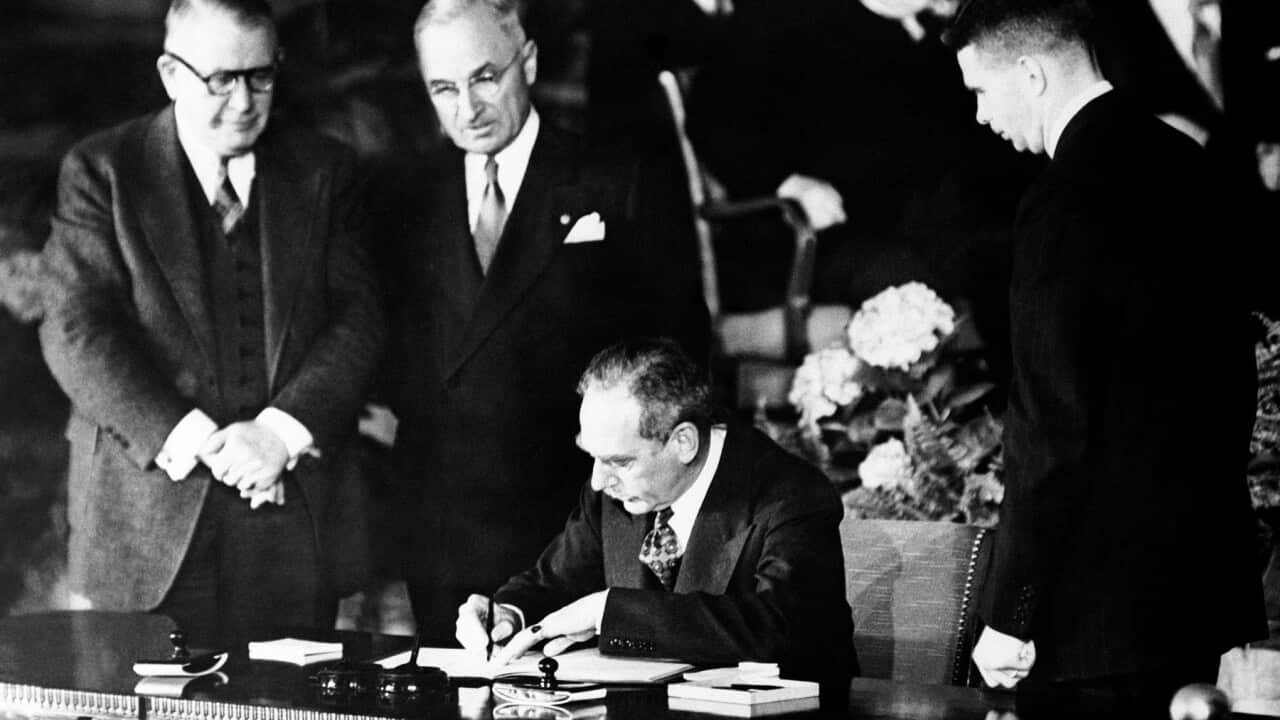Italian
"There reallt isn't a whole lot of space in here. Just pace for a sleeping bag and for us to sleep and for a few personal items and stuff for regular use... We have two laptops in here."
Questa è l'astronauta italiana Samantha Cristoforetti.
Si trova nella Stazione Spaziale Internazionale, mentre descrive la sua zona notte nella missione Futura.
Durante questa missione sei anni fa infranse il record della permanenza più lunga in solitaria detenuta da una donna.
Cristoforetti è una delle sole due donne che l'Agenzia Spaziale Europea ha mai mandato nello spazio.
Si tratta di uno squilibrio che l'agenzia adesso sta cercando di correggere nella sua quarta campagna di reclutamento mai intrapresa dal 1978.
Nella sua ultima ricerca per futuri astronauti, l'ESA è interessata in modo particolare a ottenere una squadra che sia più diversa tra i generi.
Tra le oltre 560 persone che hanno volato nello spazio, solo 65 sono donne.
Negli anni '50, quando la NASA stava iniziando a contemplare l'idea di mandare persone nello spazio, iniziò a cercare uomini che fossero più bassi di un metro e ottanta.
Ma l'allora presidente degli Stati Uniti Dwight Eisenhower insistette come requisito che solo i piloti di test militari potessero fare domanda.
Fu questa richiesta che in pratica bloccò le donne dal parteciparvi.
Il direttore dell'esplorazione umana e robotica David Parker.
"Traditionally, in the past astronauts have often been test pilots, and indeed, qualified test pilots are eligible for this call for astronauts. But equally, living and working aboard the space station, we're looking for also a much broader set of possible skills, in science, or technology, or medicine. The type of people who are going to undertake the scientific experiments aboard Columbus, be adaptable enough to prepare for missions to go into deep space, maybe towards the moon, and also, they've got to be ready themselves to be test subjects for the medical experiments."
L'agenzia inoltre crede che sia arrivata l'ora di rendere accessibile lo spazio a persone con disabilità fisiche.
La partner aziendale esperta in risorse umane Antonella Costa ha dichiarato che il progetto pilota della ESA è il primo in Europa.
"Diversity and inclusiveness are key values at ESA. For the first time in human history, ESA will be selecting one or more persons with certain classes of physical disabilities, who will take part in the ESA Parastronaut Feasibility Project."
Basandosi sulle categorie create dalla Commissione Paraolimpica Internazionale, l'agenzia prenderà in considerazione richieste che provengono da persone con deficienze negli arti inferiori, differenze estreme nelle lunghezze delle gambe e dalla statura di meno di 130 centimetri.
L'astronauta italiano Luca Parmitano era uno dei sei candidati che fece domanda nelle ultime selezioni dell'agenzia nel 2008.
Da allora ha volato in due missioni orbitali.
Mentre l'agenzia inizia a cercare la nuova generazione di esploratori, Parmitano ha dei consigli da dare.
"One thing that, if I could go back, I would tell myself from ten years ago is to just be relaxed and be myself. There is nothing that I could have done differently. The selection process, what's going on right now, is not the time to try and change, to try to improve, to try to be a different person. I think I would have been a lot more relaxed in trying to show who I am, what I'm capable of doing, and what my background and experience was. So, my recommendation would be this - just be yourself, if you want to be an astronaut, you already have what it takes."
I funzionari dell'ESA prevedono che il processo per vagliare le domande possa durare 18 mesi.
L'ESA punta ad annunciare 4 dei 6 nuovi cadetti spaziali entro ottobre del prossimo anno.
English
"There really isn't a whole lot of space in here. Just pace for a sleeping bag and for us to sleep and for a few personal items and stuff for regular use... We have two laptops in here."
This is Italian astronaut Samantha Cristoforetti.
She's at the International Space Station, describing her sleeping quarters at the Futura mission.
It was this mission six years ago where she broke the record for the longest single space flight by a woman.
Ms Cristoforetti is one of only two women the European Space Agency [[E-S-A]] has ever sent to space.
It's an imbalance the agency is now seeking to redress in just their fourth ever call for applicants since 1978.
In this latest search for future astronauts, the E-S-A is particularly interested in having a team that's more gender diverse.
Of the more than 560 people who've flown to space, only 65 have been women.
In the 1950s, when NASA first contemplated sending people into space, they initially called for men who were shorter than 5'11".
But US-president at the time, Dwight Eisenhower, insisted on making it a requirement that only military test pilots be eligible.
It was this requirement that effectively blocked women from applying.
E-S-A director human and robotic exploration, David Parker.
"Traditionally, in the past astronauts have often been test pilots, and indeed, qualified test pilots are eligible for this call for astronauts. But equally, living and working aboard the space station, we're looking for also a much broader set of possible skills, in science, or technology, or medicine. The type of people who are going to undertake the scientific experiments aboard Columbus, be adaptable enough to prepare for missions to go into deep space, maybe towards the moon, and also, they've got to be ready themselves to be test subjects for the medical experiments."
The agency also believes the time has come for space to be accessible to people with physical disabilities.
Human resources business partner Antonella Costa says E-S-A 's pilot project is a European-first.
"Diversity and inclusiveness are key values at ESA. For the first time in human history, ESA will be selecting one or more persons with certain classes of physical disabilities, who will take part in the ESA Parastronaut Feasibility Project."
Based on categories set by the International Paralympic Committee, the agency will consider applications from people with a lower limb deficiency, extreme leg length differences, and stature of less than 130 centimetres.
Italian astronaut Luca Parmitano was one of six candidates who applied for the agency's last selection in 2008.
He's flown on two orbit missions since.
As the agency begins looking for its next generation of explorers, Mr Parmitano has a word of advice.
"One thing that, if I could go back, I would tell myself from ten years ago is to just be relaxed and be myself. There is nothing that I could have done differently. The selection process, what's going on right now, is not the time to try and change, to try to improve, to try to be a different person. I think I would have been a lot more relaxed in trying to show who I am, what I'm capable of doing, and what my background and experience was. So, my recommendation would be this - just be yourself, if you want to be an astronaut, you already have what it takes."
E-S-A officials predict the application process will take around 18 months.
They're hoping to announce four to six new space cadets by October next year.
Report by Nadine Silva




